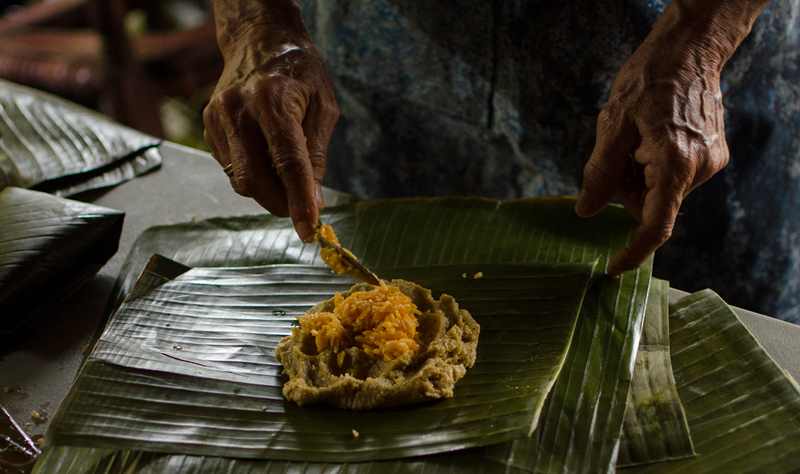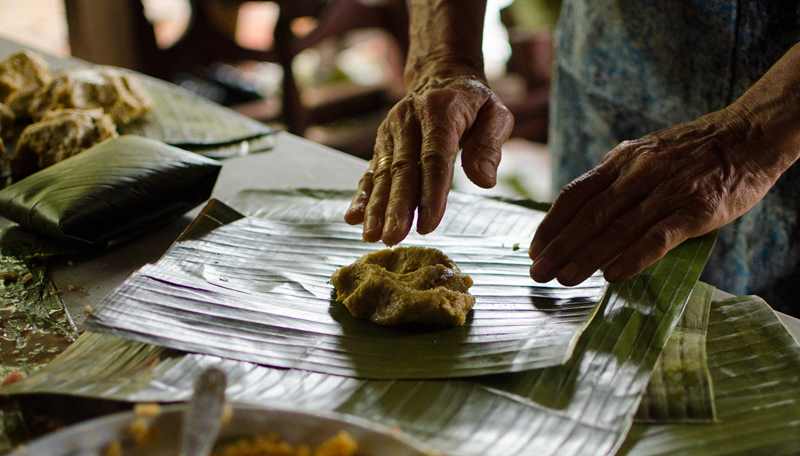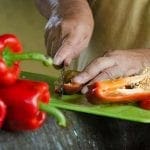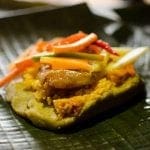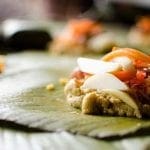
Tamale Time – Tasty Tico tradition dates back thousands of years
Tamales! Generations of Costa Ricans have regarded this legendary dish as synonymous with Christmas. They would impatiently await that magical time where the entire family came together to honor the holiday tamale tradition.
Everyone who has been in Costa Rica long enough has likely heard about tamales or tried them to see what the fuss is about. But, have you ever wondered, where did tamales come from?
The tamale is believed to date back as early as 7000 BC. The name comes from a word in the Aztec language Nahuatl, tamalli, which means “wrapped food.” In a nutshell — or wrapped up tight like a tamale in this case — here is a brief history of this culinary legacy.
While the origins of the first tamales many thousands of years ago are lost in the mists of time, we know that in pre-Colombian tribes, women were taken along in battle as army cooks. They would prepare the maize (corn) to make tortillas along with meat and stews. As the tribes grew larger in size, carrying all that corn, along with the other ingredients and utensils, became an overwhelming task. So the women had to come up with a creative way to make food that was more portable, without sacrificing the nutritional value that the warriors needed to fight.
And that appears to be how the modern tamale was born. It was a classic case of necessity being the mother of invention. Tamales could be made ahead and packed for travel. When it was time to eat, they would be steamed or grilled over a fire, or even eaten cold.
Although the tamale’s origin cannot be attributed to a specific tribal culture, there is no question that the idea spread quickly. It wasn’t long before all indigenous tribes were preparing variations of tamales, incorporating them in their everyday diet and religious rituals. However, stuffed tamales were prepared only at the end of the solar cycle, which coincides with Christmas time. It is truly amazing how this tradition has survived so many millennia and monumental historic events, including Spanish colonization. Nowadays, tamales are a traditional dish almost everywhere in Latin America, and distinctive methods of preparation vary from country to country.
Tico-style tamales
In Costa Rica, two kinds of tamales are considered typical: tamal asado, which is stuffed, and tamal mudo (mute tamale), which has no stuffing. Traditionally, these tamales are exclusive to special occasions such as Christmas and Holy Week, because of the careful preparation and length of time required.
Therefore, the notion of “making a few tamales” is virtually inconceivable. Instead, Costa Rican families by tradition devote their entire weekend to producing tamales in a mass-production manner. This is a cherished time when all family members come together to engage in teamwork, happy conversation and catching up with each other’s lives.
Everyone works dutifully on each specific task involved in the process, such as preparing the banana leaves, the filling ingredients, and the masa (dough). The first day is spent making the fillings of the masa. The following day, family members of all ages line up to spread the masa on the leaves, then fill and wrap into tamales. The next step is to place the tamales in a steamer for about four hours. Then they are ready to enjoy! The tamales may be eaten plain or with Salsa Lizano (a Costa Rican Worcestershire-style sauce, also commonly used on gallo pinto). Homemade bread and rompope (Costa Rican eggnog) make the meal complete.
Not surprising, this family cooking party is called a tamalada. The process of making the tamales is just as important as eating them. Recipes and “grandma’s secrets” are passed on from family member to family member, generation to generation. There is no “right” way of doing it. Everyone has a secret ingredient and a helpful tip to offer, making tamales a tradition that continues evolving.
That may be just as well, considering that the first Meso-American tamales were stuffed with pretty much anything available: frog, fish, iguana, flamingo, rabbit, ox, goat or wild boar meat … vegetarian ingredients like eggs, squash, mushroom, potato, honey, seeds and nuts … and even sweet tamales with berries, pumpkin and cinnamon.
Nowadays, let’s be honest — we are not that creative. Although vegetarian tamales have become more common as the trend has spread worldwide, tamales typically contain some kind of carnita (meat). Today’s tamale is usually stuffed with pork, and sometimes chicken or beef, and also garlic, sweet or hot peppers, green beans, onions, rice and potatoes. These tamales are generally not spicy, but perhaps seasoned with a bit of cumin, achiote and black pepper.
Tamales may be eaten at any time of the day, most often accompanied by a warm coffee or a sweet aguadulce (traditional sugar cane drink).
No free lunches
By now, you might want a chance to savor some of Costa Rica’s famous tamales. Your best bet is to get invited to a tamalada. Perhaps the Tico neighbor you’ve befriended will like you enough to invite you to this intimate family celebration. Then you’re set! But remember, there is no such thing as a free lunch. Long before your first bite into the finished product at the tamalada, you’ll be expected to work just as hard as everyone else.
If you don’t manage to swing a tamalada invitation or sneak in the back door, drop by one of the small local restaurants in your area. Sodas usually sell tamales, especially during the holiday season. Typically, they are purchased in pairs, wrapped together with some twine. This is called a piña. (Piña means pineapple, though there is no pineapple involved.) The cost of the piña de tamal is around 1,000 colones.
What I find most beautiful about tamale heritage is that it’s so intrinsically Costa Rican. The origin of tamales is indigenous, but the incorporation of Spanish elements, such as pork and rice, is consistent with what Costa Ricans have done with every other aspect of their culture. The modern tamale is a tribute to what Ticos are nowadays, a unique blend of cultures. And of course, the holiday tradition of the tamalada centers around what Costa Ricans cherish the most — family.
I hope you enjoy some delicious tamales this holiday season and get to taste a little bit of Costa Rican history. ¡Buen provecho!
Tried and True Tamale Traditions
Costa Rican pueblos have their own traditions and recipes when making tamales. Below are two groups of Guanacastecans who make tamales, with contact info to order yours. Here also is a list of ingredients to make 900 tamales, in case you want to start your own tradition.
Josefina Lopez Bonilla Recipe
Fifty years ago, Josefina Lopez Bonilla donated a piece of land to build the school in Santa Cruz. The teachers started organizing fundraising activities, including the production and sale of tamales. Everyone in the community liked the taste of those tamales, so they kept using the same recipe (ingredients below) and passing it on from one generation to the next. To find out when the Santa Cruz group will be making tamales, and to place your order, contact Enrique Briseño, 8848-8905.
Potrero Beach Women’s Group
A group of friends who are homemakers in Potrero Beach get together to make tamales and other typical dishes as a source of income. To place your Christmas orders, call during the first week of December: Johana Mejia, 2654-4465
Ingredients to make approximately 900 tamales:
- 14 kg corn
- 15 kg pork roast
- 8 kg rice
- 9 kg carrots
- 9 kg potatoes (for stuffing)
- 4 kg potatoes (for preparing corn flour)
- 50 bell peppers (30 for preparing corn flour,
- 20 cut in strips for stuffing)
- 1 celery bunch
- 10 cilantro stalks
- 3 gal lard
- 1 kg of consommé
- Pepper with cumin
- 1 bottle Complete Seasoning
- 4 bottles Salsa Lizano
- 5 kg onion
- 10 garlic heads
- Cáñamo (to tie up the tamales)
- 24 kg platano leaves



